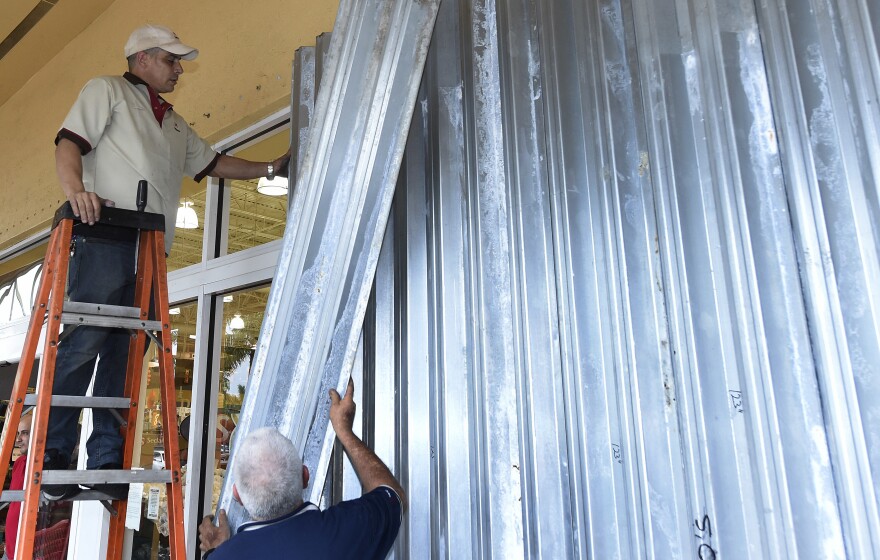Updated 11:50 p.m. ET.
The eye of Hurricane Matthew is just off the coast of Georgia, pushing surge flooding into Florida and Georgia, according to the National Hurricane Center. The storm's highest sustained winds are 105 mph. The storm is expected to move near or over the coast of South Carolina Saturday.
According to The Associated Press, two women in Florida died in separate accidents during the storm, along with an elderly couple who appear to have died of carbon monoxide poisoning while running a generator inside their garage. The governor's office has said more than one million customers had their power go out because of the hurricane.
Our original post:
Hurricane Matthew is traveling north along the Florida coastline with sustained winds of 120 mph and gusts up to 150 mph — but the most powerful winds primarily stayed offshore, sparing the coast from the worst-case-scenario damage.
The Category 3 storm, even at a distance, has had gusts on land of more than 100 mph, causing power outages for more than 1 million customers as of 3 p.m. ET, according to the office of Florida Gov. Rick Scott.
Storm surge flooding remains a threat even as the hurricane skirts the shore. And forecasters emphasize that the powerful storm could easily move a few miles west, with devastating consequences.

"We have been very fortunate that Matthew's category 3 winds have remained a short distance offshore of the Florida Coast thus far," the National Hurricane Center says, "but this should not be a reason to let down our guard. Only a small deviation to the left of the forecast track could bring these winds onshore."
If you want a close look at what, exactly, southern Florida managed to dodge, NOAA Hurricane Hunters flew a plane right through the eyewall and into the eye of the storm.
That eyewall — where the strongest winds are — has brushed against the Florida coast and will be traveling "over or very near" northeastern Florida and then Georgia later today.
On Saturday, Hurricane Matthew will pass parallel to the South Carolina coast. Initial forecasts projected the storm would affect the southern section of the state; hurricane warnings are now in effect for the entire South Carolina coastline as well as parts of North Carolina.

Throughout that area, the National Hurricane Center warns of a dangerous storm surge and potentially life-threatening inundation levels, in addition to the risk of hurricane-force winds.
The storm is not expected to weaken significantly over the course of Friday afternoon, and even when it begins to lose strength, it is anticipated to remain a hurricane for its entire journey up the coast.

President Obama addressed reporters after being briefed by emergency chiefs at FEMA headquarters. "This is something to take seriously," he said, advising people in evacuation zones to move inland. "We hope for the best but we want to prepare for the worst."
Obama has declared a state of emergency in several states, to allow federal funds to be used for disaster relief.
As NPR reported yesterday, millions of people were ordered or advised to head inland as state governors issued strongly worded evacuation orders.
Forecasters emphasized that the storm would be traveling along the coast in such a way that a small deviation could either send it directly onto land or out to sea, making it difficult to predict outcomes. Given the strength of the storm, if the eyewall hits land it could have historic consequences.
Thousands of flights in the region have been canceled, and Amtrak has suspended some routes. Cruise ships have changed their schedules too — in some cases, resulting in longer trips, The Associated Press reports.
The AP notes that according to forecasters, rain and storm surge may be more dangerous than the eye-popping wind speeds at the center of the storm: "They said the major threat to the Southeast would not be the winds — which newer buildings can withstand — but the massive surge of seawater that could wash over coastal communities."
Hurricane Matthew killed hundreds of people in the Caribbean — mostly in Haiti, where the full extent of the devastation is still being evaluated.
Copyright 2023 NPR. To see more, visit https://www.npr.org.





